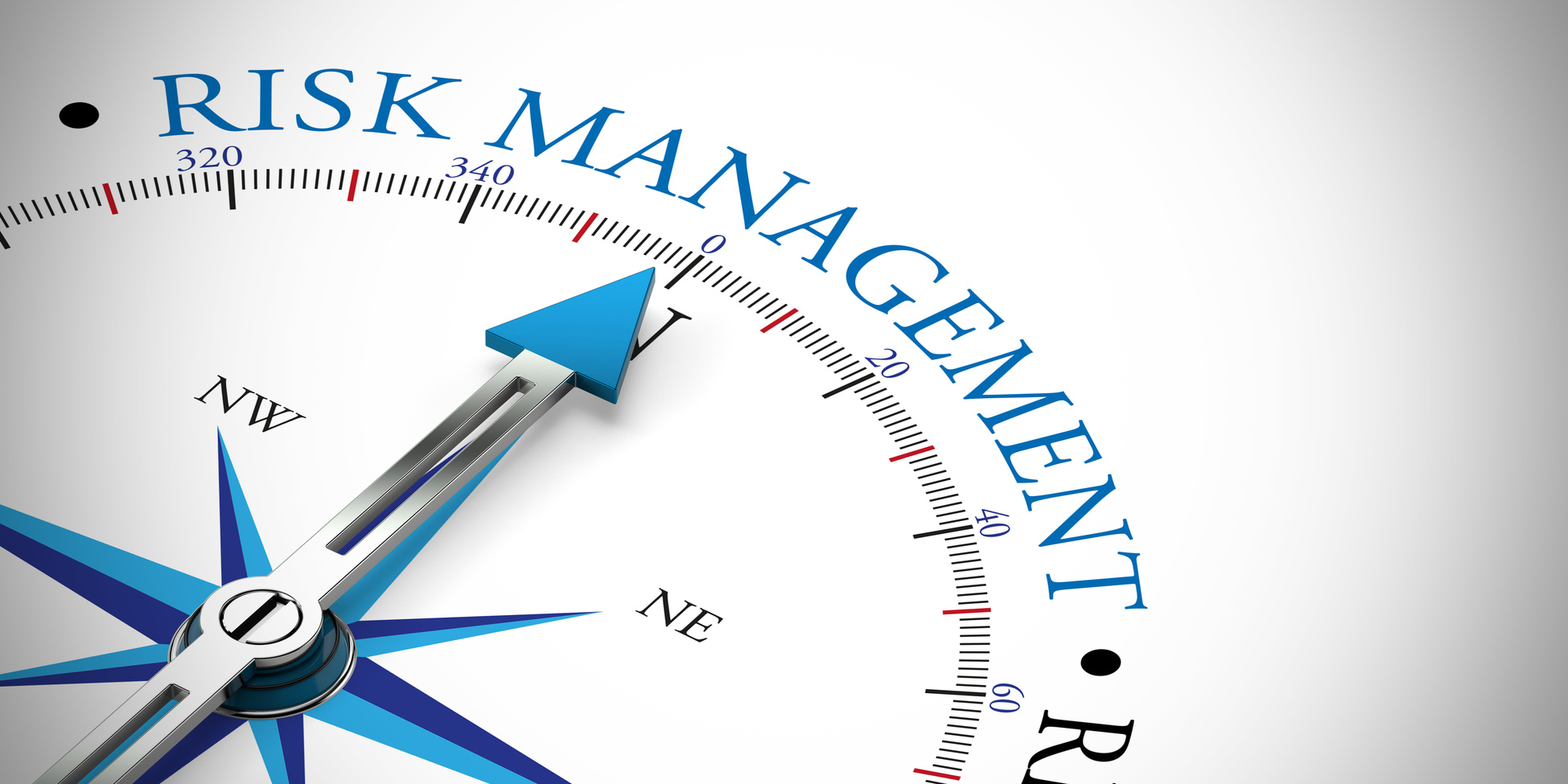Risk Management In Investing - Definition And Common Strategies
Risk management in investing helps businesses recognize and deal with potential problems, establish standards for acceptable risks, and get ready for unforeseen challenges. By thoroughly identifying, evaluating, analyzing, and controlling risks, it enhances communication, collaboration, and decision-making across the entire organization.
Author:Habiba AshtonReviewer:Gordon DickersonDec 31, 20232.7K Shares60.9K Views

Risk management in investinghelps businesses recognize and deal with potential problems, establish standards for acceptable risks, and get ready for unforeseen challenges. By thoroughly identifying, evaluating, analyzing, and controlling risks, it enhances communication, collaboration, and decision-making across the entire organization. A strong risk management strategy is advantageous for every department, such as sales, marketing, procurement, project management, and accounting.
What Is Risk Management?
Risk management in investment encompasses the identification, analysis, and subsequent acceptance or mitigation of uncertainty. In simpler terms, it is the systematic process of overseeing and addressing the financial risks inherent in investment decisions.
This practice comes into play when investors or fund managers scrutinize and seek to quantify potential losses in an investment, including factors like moral hazard. Following this assessment, they then take the necessary actions or decide on inaction, aligning with their objectives and risk tolerance.
When an entity opts to invest, it inherently opens itself up to a range of financial risks. The extent of these risks is contingent on the nature of the financial instrument involved. These financial risks can manifest in various forms, such as high inflation, capital market volatility, economic downturns, or potential bankruptcy.
To curtail and regulate the vulnerability of investments to such risks, both fund managers and investors engage in the practice of risk management. Neglecting the significance of risk management in investment decisions could lead to significant repercussions during financial upheavals in an economy.
Different asset classes come with varying levels of risk; for instance, a fixed deposit is generally deemed a less risky investment compared to the comparatively riskier nature of equity investments. When implementing risk management, equity investors and fund managers often opt to diversify their portfolios as a strategic measure to mitigate risk exposure.
How Risk Management Works
Risk and return are inherently intertwined in the realm of investments. Every investment venture carries a certain level of risk, ranging from close to zero for U.S. T-bills to considerably high for assets like emerging-market equities or real estate in inflationary markets. The quantification of risk can be expressed in both absolute and relative terms. A profound comprehension of risk in its diverse forms is pivotal for investors, aiding in a better understanding of opportunities, trade-offs, and costs associated with different investment approaches.
The practice of risk management involves the identification and analysis of existing risks, followed by strategic decision-making on how to address them. This process permeates various facets of finance, with examples such as:
- An investor opts for U.S. Treasury bonds instead of corporate bonds.
- A fund manager employs currency derivatives to hedge against currency exposure.
- A bank conducts a credit check before extending a personal line of credit.
- A stockbroker utilizes financial instruments like options and futures.
- A money manager implements strategies like portfolio diversification, asset allocation, and position sizing to effectively mitigate or manage risk.
Thorough risk management plays a crucial role in minimizing the likelihood of losses and ensuring the achievement of financial goals. Conversely, insufficient risk management can lead to severe repercussions for companies, individuals, and the overall economy.
A notable example is the subprime mortgage meltdown that precipitated the Great Recession, which originated from poor risk management practices. In this scenario, lenders extended mortgages to individuals with poor credit, and investment firms subsequently acquired, bundled, and resold these loans to investors in the form of risky mortgage-backed securities (MBSs).
Risk Management Strategies
Five fundamental methods of risk management include:
Avoidance
Avoidance serves as a risk mitigation method by refraining from engaging in activities that pose potential harm, illness, or fatality. A prime example is the act of smoking, where abstaining from this behavior not only contributes to improved health but also diminishes associated financial risks.
According to the American Lung Association, smoking stands as the leading cause of preventable deaths in the U.S., claiming over 480,000 lives annually. Furthermore, the U.S. Centers for Disease Control and Prevention underscore smoking as the primary risk factor for developing lung cancer, with the risk escalating with prolonged smoking duration.
Life insurance companies address this risk by adjusting premiums and charging higher rates for smokers compared to nonsmokers. The Affordable Care Act, commonly known as Obamacare, permits health insurers to modify premiums based on factors like age, location, family size, and smoking status. In the case of smokers, the law allows for a surcharge of up to 50% on premiums.
Retention
Retention involves recognizing and embracing a specific risk as inevitable. Typically, this acknowledged risk is viewed as a cost-effective measure to offset potential larger risks in the future.
An illustrative example is the decision to opt for a lower-premium health insurance plan with a higher deductible. The initial risk involves the potential for increased out-of-pocket medical expenses if health issues arise.
However, in the event of more serious or life-threatening conditions, the health insurance benefits kick in, covering most costs beyond the deductible. If the individual remains free from significant health issues that would necessitate additional medical expenses for the year, they can avoid the out-of-pocket payments, effectively mitigating the larger risk altogether.
Sharing
Risk sharing is commonly executed through employer-based benefits, wherein the company contributes a portion of insurance premiums alongside the employee. This arrangement essentially distributes the risk among the company and all participating employees in the insurance benefits.
The premise is that with a larger pool of participants sharing the risks, the associated premium costs should decrease proportionally. Opting for employer health care and life insurance plans becomes a favorable choice for individuals as they actively engage in this risk-sharing mechanism, potentially benefiting from reduced premium costs.
Loss Prevention And Reduction
This risk management approach aims to mitigate losses rather than eliminate them. While acknowledging and accepting the risk, the focus remains on containing and preventing the loss from escalating. An instance of this strategy in health insurance is the promotion of preventative care.
Health insurers actively promote preventative care visits, often offering them with minimal or no co-pays, allowing members to undergo annual checkups and physical examinations. The rationale behind this is the recognition that early detection of potential health issues and the provision of preventative care can effectively reduce long-term medical costs. Also, many health plans extend discounts to gyms and health clubs, serving as another preventive measure to encourage members to stay active and maintain their health.
Transfer
Using health insurance exemplifies the practice of risk transfer, as the financial liabilities associated with healthcare are shifted from the individual to the insurer. In exchange for a fee known as a premium and the establishment of a formal contract, insurance companies undertake the financial risk. The contractual agreement outlines all conditions and stipulations that must be adhered to for the insurer to assume the financial responsibility of covering the risk.
Through the acceptance of terms, adherence to conditions, and payment of premiums, individuals effectively transfer most, if not all, of the risk to the insurer. The insurer employs various statistics and algorithms to meticulously determine appropriate premium payments corresponding to the requested coverage. When claims are submitted, the insurer rigorously assesses whether the conditions are met, adhering to the contractual obligations for the risk outcome payout.
Types Of Risk Management
Beta And Passive Strategies
A behavioral-oriented risk measure is a drawdown, referring to periods during which an asset's return is negative compared to a previous high mark. When assessing drawdown, we consider three key aspects:
- Magnitude -how severe is each negative period?
- Duration -how long does each negative period last?
- Frequency -how often do these negative periods occur?
For instance, beyond evaluating whether a mutual fund outperforms the S&P 500, understanding its comparative risk is crucial. Beta, also known as market risk, serves as a measure for this. Based on covariance, a beta greater than 1 indicates higher risk than the market, while a beta less than 1 suggests lower volatility. Beta aids in comprehending passive and active risk.
Alpha And Active
In a scenario where market or systematic risk is the sole influencing factor, a portfolio's return would consistently align with the beta-adjusted market return. However, this is not the reality.
Returns fluctuate due to various factors unrelated to market risk. Active investment managers, pursuing strategies to surpass the market's performance, willingly undertake additional risks, including:
- Utilizing stock leverage
- Making sector or country selections
- Employing fundamental analysis
- Determining position sizes
- Applying technical analysis
These active strategies aim to yield alpha, which is the measure of excess return. In their pursuit of excess returns, active managers expose investors to alpha risk - the risk that the outcomes of their strategic decisions may turn out unfavorably.
For instance, a fund manager might anticipate that the energy sector will outperform the S&P 500 and increase the portfolio's weighting in this sector. However, if unforeseen economic developments lead to a sharp decline in energy stocks, the manager is likely to underperform the benchmark.
The Cost Of Risk
The level of fees charged by an active fund and its managers tends to correlate with their ability to generate alpha. In the realm of purely passive investment vehicles, such as index funds or exchange-traded funds (ETFs), investors typically incur annual management fees ranging from one to 10 basis points (bps).
On the other end of the spectrum, for high-powered hedge funds employing intricate trading strategies, substantial capital commitments, and transaction costs, investors may find themselves paying 200 bps in annual fees. Also, a share of the profits, often around 20%, may need to be returned to the manager.
The notable pricing contrast between passive (beta risk) and active strategies (alpha risk) prompts many investors to segregate these risks. They opt to pay lower fees for the assumed beta risk while concentrating higher-cost exposures on precisely defined alpha opportunities. This strategy is commonly referred to as portable alpha, grounded in the concept that the alpha component of total return is distinct from the beta component.
As an illustration, a fund manager might assert the implementation of an active sector rotation strategy aimed at outperforming the S&P 500, showcasing a historical track record of surpassing the index by an average annualized basis of 1.5%. Investors are willing to pay elevated fees to access this excess return, considered the manager's value or alpha.
The remaining portion of the total return, reflective of what the S&P 500 itself earned, is perceived as unrelated to the manager's distinctive skill. Portable alpha strategies leverage derivatives and other tools to optimize the acquisition and payment of the alpha and beta components of their exposure.
Risk Management And Psychology
Behavioral finance focuses on how people see gains and losses differently. Investors exhibit something known as "loss aversion" in prospect theory, a branch of behavioral finance that Amos Tversky and Daniel Kahneman first introduced in 1979. This means investors feel about twice as strongly about the pain of a loss as they do about the happiness of a profit.
Investors often want to know how much they might lose with an investment and how far off an asset might be from what they expected. Value at risk (VAR) tries to measure the potential loss of an investment with a certain level of confidence over a specific period.
For example, an investor might expect to lose $200 on a $1,000 investment with 95% confidence over two years. It's important to understand that a measure like VAR doesn't guarantee that 5% of the time will be much worse; it just gives an idea of potential loss under certain conditions.
Risk Management And Volatility
Investment risk is when things don't go as expected. This could mean gaining less or losing more than you thought. Investment experts agree that this deviation from expectations, whether good or bad, is part of investing.
If you want to make more money, you usually have to take on more risk. It's also widely accepted that higher risk often comes with more ups and downs in the investment value, known as volatility. While experts are always trying to find ways to reduce these ups and downs, there's no clear agreement on how to do it.
How much risk someone should take depends on how comfortable they are with it, known as risk tolerance. For experts, it's based on what they're trying to achieve with their investments. One common way to measure risk is using a term called standard deviation, which shows how much the investment value tends to vary from its average.
Risk Management In Investing - FAQ
What Are The Five Categories Of Risk?
The five types of risk are operational, financial, strategic, compliance, and reputational. Let's take a closer look at each type: Operational. The possibility that things might go wrong as the organization goes about its business.
How Is Risk Calculated?
The more likely it is that harm will happen, and the more severe the harm, the higher the risk. Before you can control risk, you need to know what level of risk you are facing. To calculate risk, you simply need to multiply the likelihood by the severity.
What Are Two Methods Used To Identify Risks?
Cause and Effect, Ishikawa, or Fish-bone diagrams. These diagrams are a way of searching for root causes, identifying problems, and comparing the importance of different causes. Exploring the causes and continually asking why or how for each cause leads to better risk analysis and a better understanding of the problem.
Conclusion
Risk plays a crucial role in the financial realm, and while it often carries a negative connotation due to the possibility of capital and investment loss, it's not always detrimental. Risk management in investing is frequently associated with significant rewards. Understanding the nature of risks, being able to identify them, and applying appropriate risk management strategies can effectively minimize losses while allowing you to enjoy the potential rewards.

Habiba Ashton
Author

Gordon Dickerson
Reviewer
Latest Articles
Popular Articles

